In 2025, Smart Speakers have become a cornerstone of the modern smart home, offering more than just voice-controlled music playback.
With advancements in artificial intelligence and IoT connectivity, these devices now function as the central hub for home automation, entertainment, and even personal assistants.
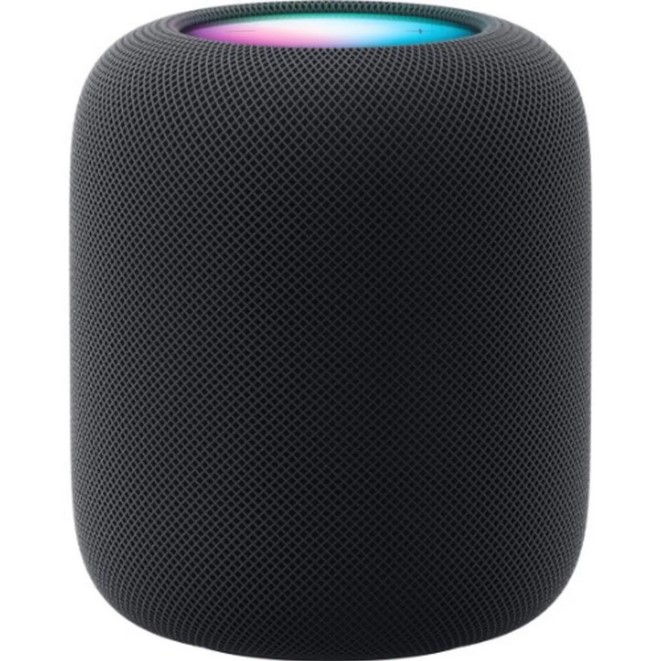
Whether you’re looking to simplify your life, enhance your home entertainment system, or boost your productivity, Smart Speakers offer a wide array of features tailored to fit various needs.
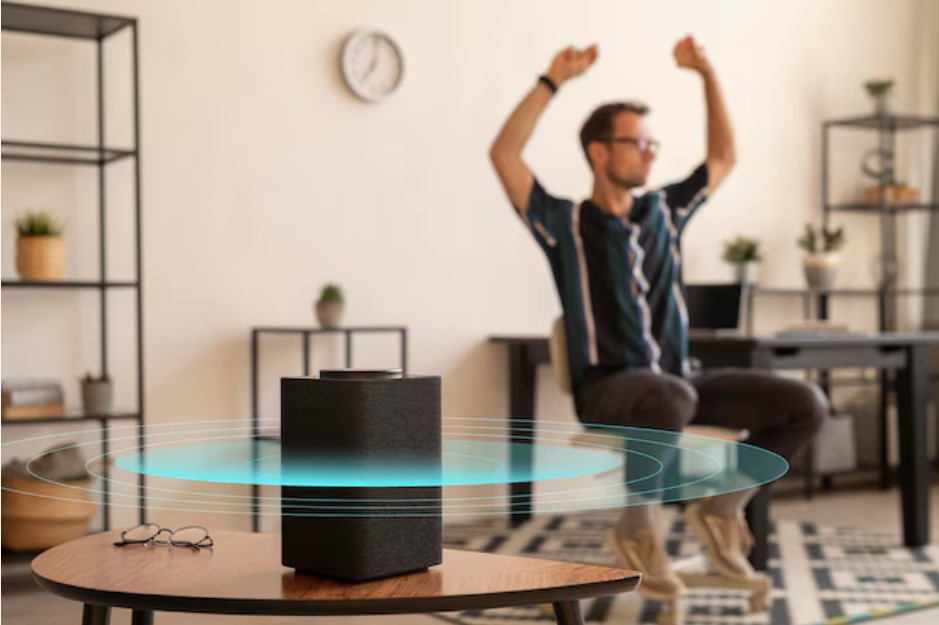
Verdict on Smart Speakers
Smart Speakers are not just a luxury but a necessity for a smarter, more connected home in 2025. They combine convenience, functionality, and entertainment in a single package, making them a wise investment for anyone looking to upgrade their living space.
With their ability to control other smart devices, provide real-time information, and deliver high-quality audio, they are truly a game-changer in the world of home automation.

What are Smart Speakers?
Smart Speakers are voice-activated devices that utilize AI to perform various tasks such as playing music, setting reminders, controlling smart home devices, and providing real-time information.
These devices connect to the internet and use cloud-based services to enhance their functionality, offering a seamless experience in managing your daily activities.
| Smart Speaker | Best Features | User Experiences and Reviews |
|---|---|---|
| Sonos One (Gen 2) | – High-fidelity sound quality – Dual voice assistant support (Alexa & Google Assistant) – Humidity-resistant for bathroom use – Multi-room audio – Trueplay tuning | Users love the rich, room-filling sound and seamless integration with both Alexa and Google Assistant. It’s praised for its versatility, especially in multi-room setups. Some users find it pricey but worth it. |
| Amazon Echo 4th Gen | – Built-in Zigbee hub for smart home integration – Dolby audio processing – Adaptive sound – Alexa Guard for home security – Multi-room music | Highly rated for its smart home integration and sound quality. Users appreciate the built-in Zigbee hub, making it a central hub for their smart devices. Occasional voice recognition issues in noisy settings. |
| Google Nest Audio | – Superior sound quality with bass boost – Voice Match for personalized responses – Multi-room audio – Compact design – Google Assistant integration | Users are impressed with the sound quality and how well it integrates with Google services. Voice Match is especially popular in multi-user households. Some users mention compatibility issues with third-party devices. |
| Apple HomePod Mini | – 360-degree sound – Siri integration – HomeKit compatibility – Intercom system – Compact and stylish design | Praised for its sound quality and seamless integration with the Apple ecosystem. Users appreciate the compact design and how well it works with HomeKit. Limited to Apple’s ecosystem, which may be a drawback for some. |
| Bose Home Speaker 500 | – Stereo sound from a single speaker – Dual voice assistant support (Alexa & Google Assistant) – Color display – Durable aluminum design – Wi-Fi & Bluetooth connectivity | Users love the premium audio experience and build quality. The color display adds a nice touch, but some users find it expensive. It’s often praised for its durability and sound quality, especially for music lovers. |
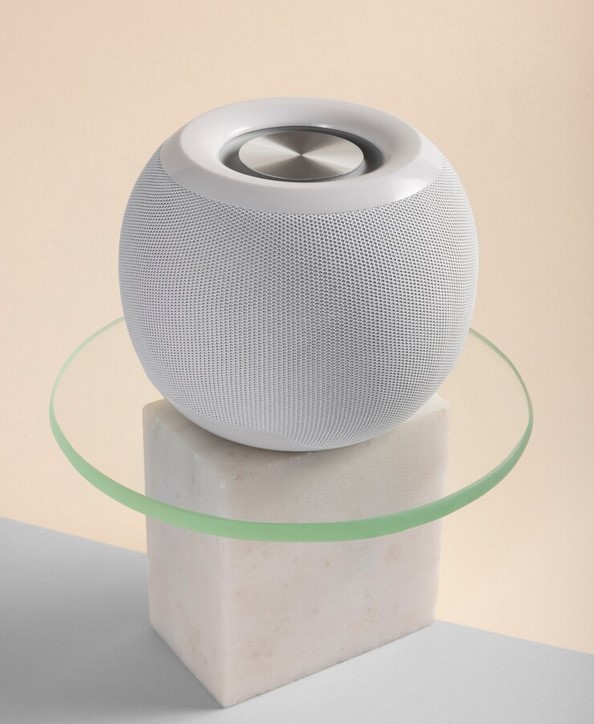
Why Should You Consider Smart Speakers?
Smart Speakers have revolutionized how we interact with technology in our homes.
Here’s why you should consider adding one to your setup:
1. Voice-Controlled Convenience: Manage your day without lifting a finger by using voice commands to control your environment, from adjusting the thermostat to locking doors.
2. Centralized Home Automation: Smart Speakers can act as a hub for all your smart home devices, streamlining your ability to manage them through a single interface.
3. Enhanced Entertainment: Enjoy hands-free control of your music, podcasts, and video streaming services. The sound quality of Smart Speakers has also dramatically improved, offering an immersive audio experience.
4. Personal Assistance: Get real-time updates on weather, traffic, news, and more. Smart Speakers can even help you organize your schedule and set reminders.
5. Increased Accessibility: Smart Speakers make technology more accessible for everyone, including those with disabilities, by providing an intuitive, voice-controlled interface.
Best Features for Smart Speakers in 2025
When choosing a Smart Speaker in 2025, look for these standout features:
- Voice Assistant Integration: Seamless compatibility with Alexa, Google Assistant, or Siri.
- Smart Home Compatibility: Ability to control a wide range of smart home devices.
- High-Quality Audio: Superior sound quality with adaptive tuning.
- Multi-Room Audio: Synchronization across multiple devices in different rooms.
- Privacy Controls: Enhanced security features, including physical microphone off switches.
Top 5 Recent Smart Speakers for 2025
Let’s dive into the top 5 Smart Speakers of 2025, each offering unique benefits and cutting-edge technology:
1. Amazon Echo 4th Gen
Best For: Alexa users and smart home integration.
Best Features: Advanced voice recognition, Zigbee hub integration, and adaptive sound.
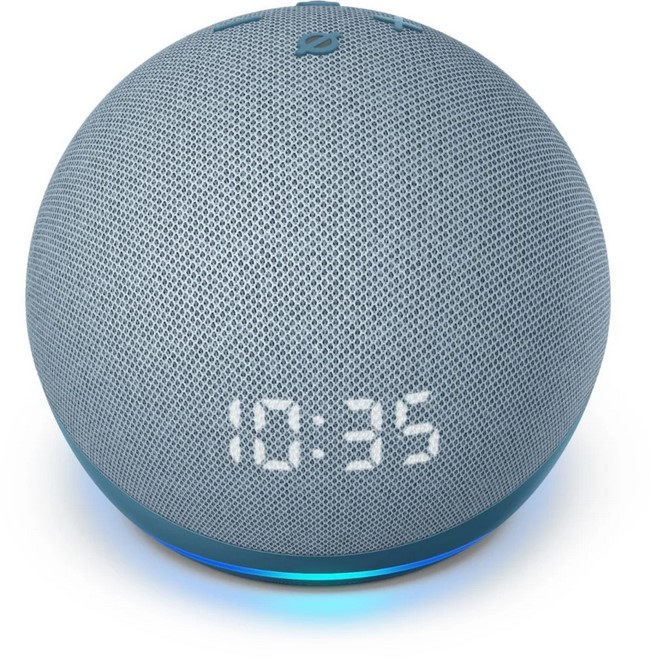
Product Description: The Amazon Echo 4th Gen is a versatile smart speaker that doubles as a smart home hub, offering seamless control over a wide range of smart devices.
Its built-in Zigbee hub allows for easy integration with various smart home systems, making it an essential component for those invested in Amazon’s ecosystem.
The speaker also features Dolby audio processing and adaptive sound, which adjusts the audio based on the room’s acoustics, delivering an optimized listening experience.
Ryan’s Advice: Ideal for those heavily invested in Amazon’s ecosystem, particularly if you have other Alexa-enabled devices.
Best Features for Amazon Echo 4th Gen:
- Built-in Zigbee hub: Allows for direct control of smart home devices.
- Dolby audio processing: Enhances the audio quality for a more immersive experience.
- Adaptive sound: Automatically adjusts the audio to fit the room’s acoustics.
- Alexa Guard: Adds a layer of home security by listening for alarms and other sounds.
- Multi-room music: Synchronizes music playback across multiple Echo devices.
User Experiences and Case Studies: Users have reported smooth integration with existing smart home devices, praising its ability to serve as a central hub for controlling everything from lights to thermostats.
A case study showed how the Echo 4th Gen improved daily convenience in a smart home, streamlining tasks with simple voice commands.
Price Range: $99.99 – $129.99
2. Google Nest Audio
Best For: Google Assistant users and excellent sound quality.
Best Features: Voice Match, multi-room audio, and bass boost.
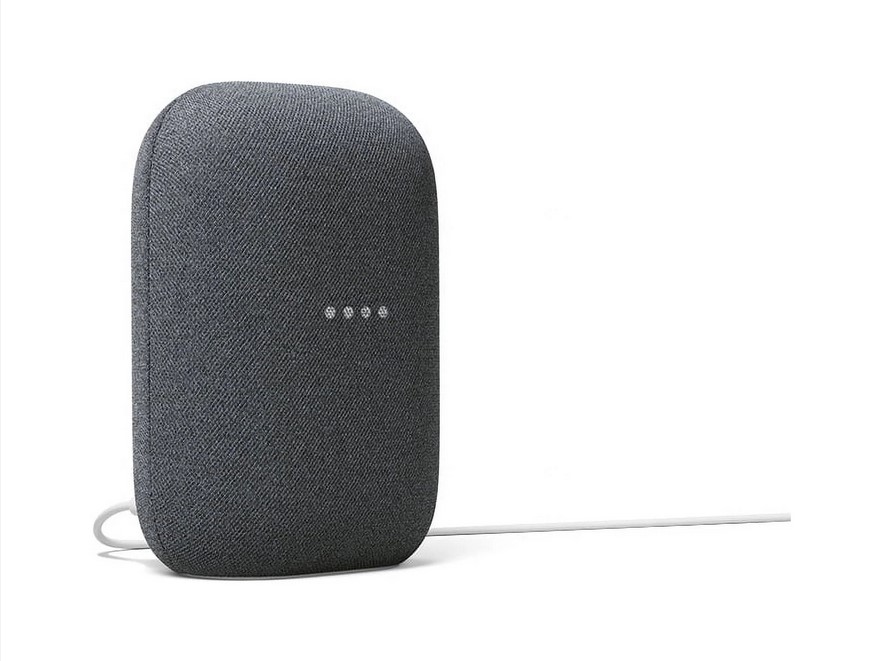
Product Description: Google Nest Audio is designed for users who want a smart speaker that delivers outstanding audio quality along with the smart features of Google Assistant.
With its Voice Match technology, it can recognize different voices in the household, providing personalized responses. The bass boost feature enhances the lower frequencies, making it ideal for music lovers.
Ryan’s Advice: Best for homes already using Google’s ecosystem, especially if you prioritize high-quality sound.
Best Features for Google Nest Audio:
- Voice Match technology: Recognizes different voices for personalized responses.
- Bass boost: Improves the depth and richness of sound.
- Multi-room audio: Supports synchronized playback across multiple speakers.
- Seamless Google Assistant integration: Offers hands-free control of your smart home.
- Compact design: Fits easily into any room without taking up much space.
User Experiences and Case Studies: Users appreciate the clarity and richness of the sound, as well as the easy integration with other Google services.
A case study highlighted how Google Nest Audio improved the daily routines in a smart home, particularly for users already familiar with Google Assistant.
Price Range: $99.99 – $119.99
3. Apple HomePod Mini
Best For: Apple users seeking a compact, high-quality speaker.
Best Features: Siri integration, 360-degree sound, and intercom system.
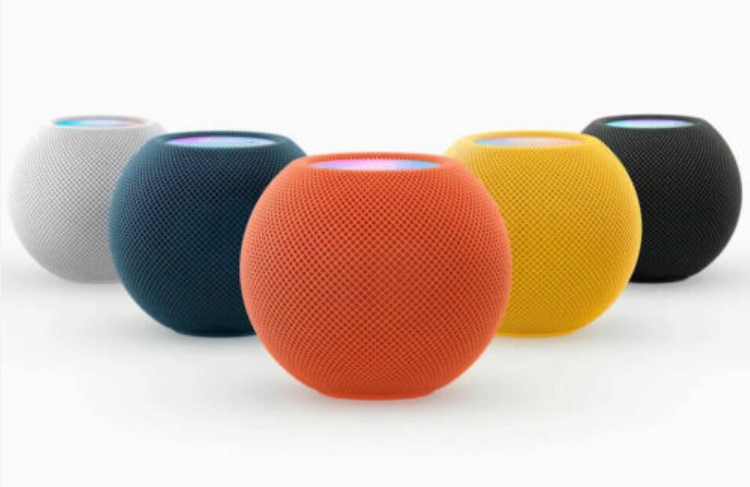
Product Description: The Apple HomePod Mini is small but mighty, delivering impressive 360-degree sound that fills the room from any angle.
It integrates seamlessly with Siri, providing hands-free control over your smart home devices.
The intercom system is particularly useful for families, allowing easy communication across different rooms.
Ryan’s Advice: Perfect for those deeply embedded in the Apple ecosystem, especially if you already use other Apple products like iPhones, iPads, or Apple TVs.
Best Features for Apple HomePod Mini:
- Siri voice control: Offers hands-free assistance and smart home control.
- 360-degree audio: Ensures consistent sound quality regardless of the speaker’s placement.
- Intercom feature: Facilitates communication between HomePods in different rooms.
- HomeKit compatibility: Easily integrates with other Apple smart home devices.
- Compact, stylish design: Fits anywhere in your home without compromising on sound quality.
User Experiences and Case Studies: Despite its small size, users are consistently impressed by the sound quality and how well it integrates with other Apple devices.
A case study from a tech-savvy family showed how the HomePod Mini became an integral part of their daily routines, from playing music to controlling smart home gadgets.
Price Range: $99.00
4. Sonos One (Gen 2)
Best For: Audiophiles and multi-room audio enthusiasts.
Best Features: Superior sound quality, Alexa and Google Assistant built-in, and humidity resistance.
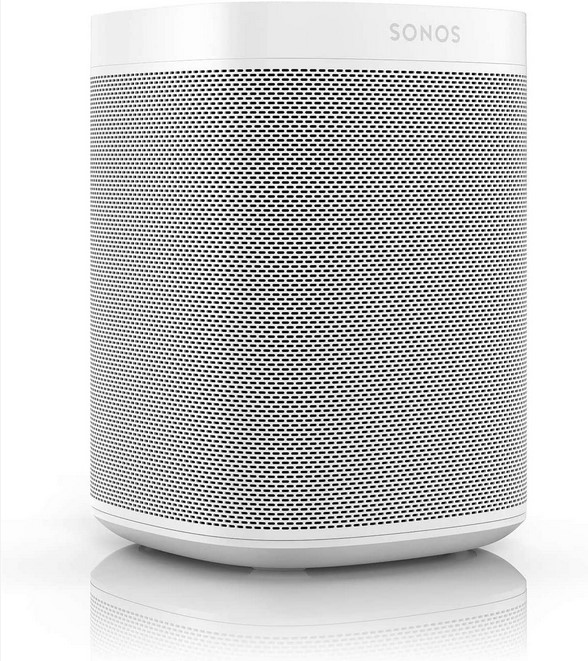
Product Description: Sonos One (Gen 2) is a premium smart speaker known for its exceptional sound quality, making it a top choice for audiophiles.
It comes with built-in support for both Alexa and Google Assistant, offering flexibility in voice control.
The speaker is also humidity-resistant, making it suitable for use in places like the kitchen or bathroom.
Ryan’s Advice: Ideal for those who prioritize audio quality and want a versatile speaker that can be used in various environments.
Best Features for Sonos One (Gen 2):
- High-fidelity sound: Delivers rich, detailed audio.
- Dual voice assistant support: Compatible with both Alexa and Google Assistant.
- Humidity resistance: Perfect for use in bathrooms or kitchens.
- Trueplay tuning: Automatically adjusts sound based on the room’s acoustics.
- Seamless multi-room audio: Allows for synchronized playback across multiple Sonos speakers.
User Experiences and Case Studies: Users rave about the sound quality and versatility of the Sonos One, noting its ability to adapt to different environments while maintaining superior audio performance.
A case study highlighted how a music enthusiast used multiple Sonos One speakers to create an immersive multi-room audio experience.
Price Range: $199.00
5. Bose Home Speaker 500
Best For: Premium audio experience and extensive voice assistant support.
Best Features: Dual Alexa and Google Assistant support, stereo sound, and a color display.

Product Description: The Bose Home Speaker 500 stands out with its premium audio quality, offering stereo sound from a single speaker.
It supports both Alexa and Google Assistant, giving users the flexibility to choose their preferred voice assistant.
The built-in color display adds a touch of elegance, showing album art or weather updates.
Ryan’s Advice: Best suited for users looking for the highest sound quality with smart capabilities and don’t mind paying a premium.
Best Features for Bose Home Speaker 500:
- Stereo sound: Provides an immersive audio experience.
- Color display: Adds visual information like album art and weather.
- Dual voice assistant support: Compatible with both Alexa and Google Assistant.
- Wi-Fi and Bluetooth connectivity: Offers flexible streaming options.
- Durable aluminum design: Ensures longevity and premium feel.
User Experiences and Case Studies: Users often mention the exceptional sound quality and the convenience of having a color display.
A case study focusing on home entertainment highlighted how the Bose Home Speaker 500 became the centerpiece of a living room, providing both high-quality audio and a stylish look.
Price Range: $299.00 – $379.00
How Smart Speakers Work
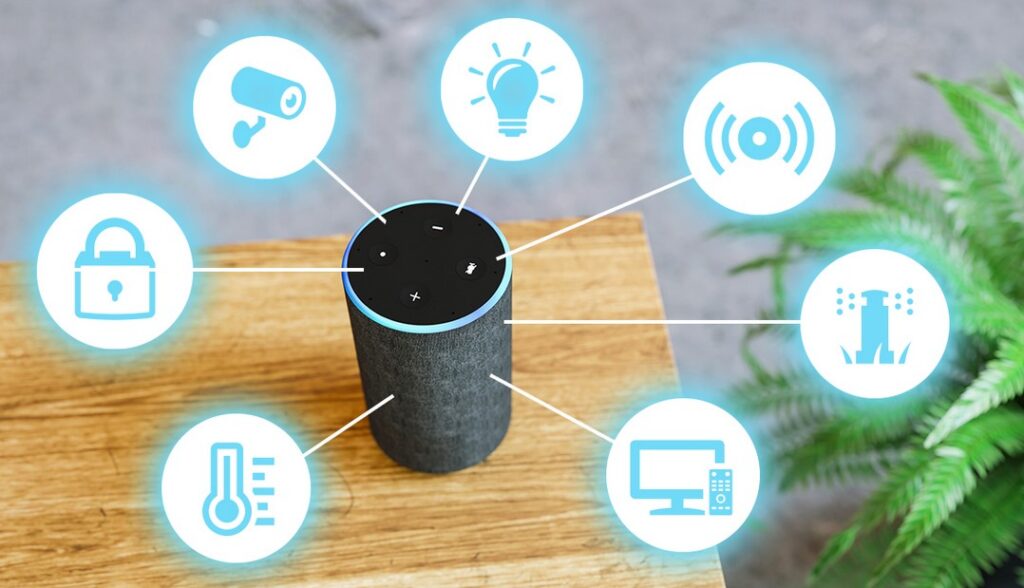
A Brief Overview of the Technology Behind Smart Speakers
Smart Speakers are more than just voice-controlled audio devices; they are sophisticated pieces of technology that bring together various advanced components to offer a seamless user experience.
At the core of a smart speaker is a microprocessor that processes voice commands, connects to the internet, and interacts with other smart devices in your home.
These speakers rely on a combination of voice recognition, natural language processing (NLP), and cloud connectivity to function effectively.
Voice Recognition and Natural Language Processing (NLP): Voice recognition is one of the key technologies behind smart speakers.
When you speak to a smart speaker, it captures your voice using built-in microphones and converts the analog sound waves into digital data.
This data is then processed by the speaker’s NLP algorithms, which decipher the meaning of the spoken words and determine the appropriate response or action.
Cloud Connectivity: Smart speakers are connected to the cloud, where most of their processing takes place.
When you ask a question or give a command, the data is sent to cloud servers where powerful algorithms process the request and return the relevant information or action back to your device.
This cloud connectivity allows smart speakers to access vast amounts of data, enabling them to provide real-time weather updates, stream music, control smart home devices, and more.
Interacting with Other Smart Devices: One of the most valuable features of smart speakers is their ability to interact with other smart devices in your home.
Using protocols like Wi-Fi, Bluetooth, Zigbee, or Z-Wave, smart speakers can communicate with devices such as lights, thermostats, security cameras, and even smart locks.
This integration turns your smart speaker into a central hub for managing your entire smart home ecosystem with simple voice commands.
Top Brands and Models
A Comparison of Leading Brands
The smart speaker market is dominated by a few key players, each offering unique features and benefits that cater to different user preferences. Here’s a comparison of the top brands in 2025:
Amazon (Echo Series): Amazon’s Echo series, powered by Alexa, is one of the most popular smart speaker lines available.
The latest models, like the Echo 4th Gen, are known for their robust smart home integration, thanks to the built-in Zigbee hub.
Amazon’s dominance in the market is largely due to Alexa’s extensive skills ecosystem, which allows users to perform a wide range of tasks, from controlling smart home devices to ordering products online.
Google (Nest Series): Google’s Nest series, particularly the Nest Audio, is renowned for its superior sound quality and seamless integration with Google Assistant.
Google’s strength lies in its ability to leverage its vast search engine and data processing capabilities, making Google Assistant one of the most knowledgeable and responsive voice assistants.
Nest speakers are ideal for users who are already immersed in the Google ecosystem.
Apple (HomePod Series): Apple’s HomePod series, including the HomePod Mini, is designed for users who value privacy, sound quality, and seamless integration with Apple’s ecosystem.
Siri powers these speakers, and while it may not have as many third-party skills as Alexa, it excels in privacy and user experience.
The HomePod Mini is particularly popular for its compact design and 360-degree audio.
Sonos: Sonos is a brand that stands out for its exceptional sound quality and multi-room audio capabilities.
The Sonos One, for example, supports both Alexa and Google Assistant, giving users flexibility in choosing their preferred voice assistant.
Sonos is often the go-to choice for audiophiles who prioritize high-fidelity sound in a smart speaker.
Bose: Bose is synonymous with premium audio quality, and the Bose Home Speaker 500 is no exception.
This speaker offers stereo sound from a single device and supports both Alexa and Google Assistant.
Bose’s emphasis on sound quality and its sleek, durable design make it a favorite among users who are willing to invest in a top-tier audio experience.
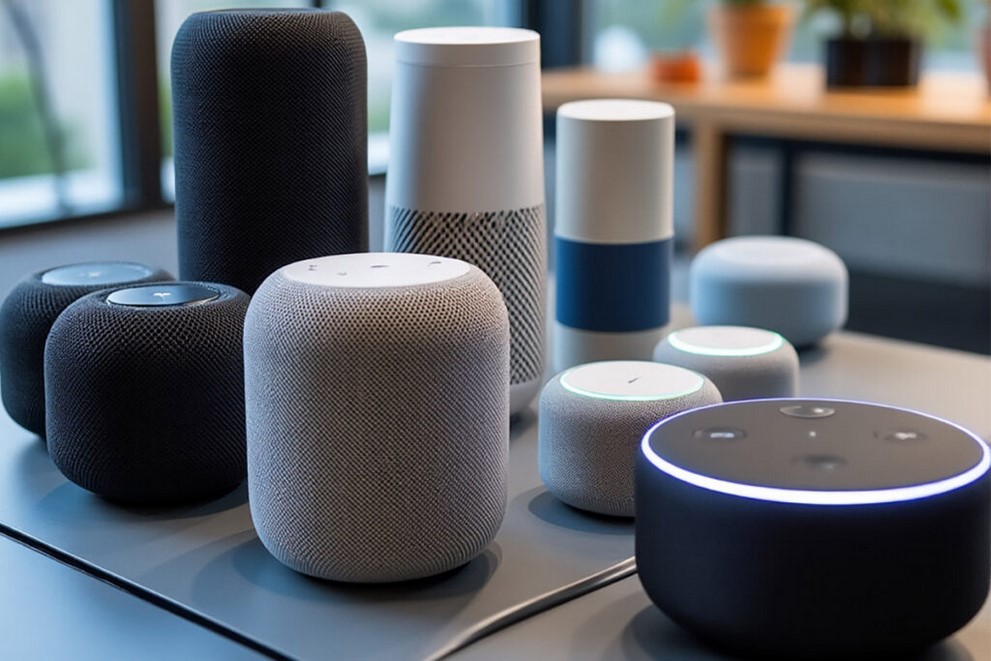
Best Smart Speakers for Different Needs
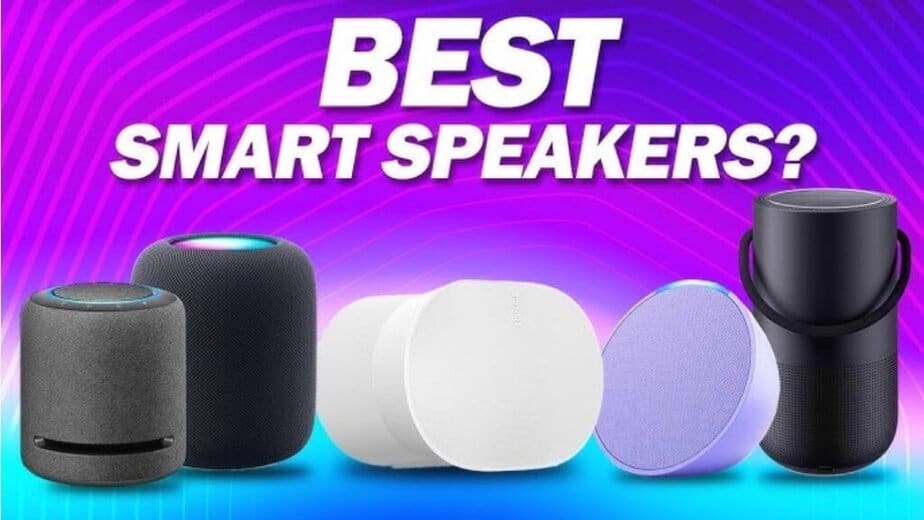
Categorizing Smart Speakers Based on Use Cases
With so many smart speakers on the market, it’s essential to choose one that best suits your specific needs.
Here’s a breakdown of the best smart speakers for various use cases in 2025:
For Music Lovers: If sound quality is your top priority, the Sonos One (Gen 2) is hard to beat. It offers rich, room-filling sound and supports both Alexa and Google Assistant. Its Trueplay tuning technology adjusts the sound based on the room’s acoustics, ensuring the best possible listening experience.
For Smart Home Automation: The Amazon Echo 4th Gen is the best choice for those heavily invested in smart home automation. Its built-in Zigbee hub allows for easy integration with a wide range of smart devices, making it a powerful hub for controlling your smart home.
For Budget-Conscious Users: The Google Nest Mini is an excellent option for those on a budget. Despite its small size and low price, it offers decent sound quality and all the functionality of Google Assistant. It’s perfect for smaller spaces or as an entry-level smart speaker.
For Apple Ecosystem Users: If you’re already using Apple products, the Apple HomePod Mini is the ideal choice. It offers seamless integration with Apple’s ecosystem, including HomeKit, and provides a high-quality audio experience in a compact form factor.
For Multi-Room Audio Enthusiasts: For those who want to create a multi-room audio setup, the Bose Home Speaker 500 is a top contender. It provides stereo sound from a single speaker and supports both Alexa and Google Assistant, making it versatile and powerful for whole-home audio.
Smart Speaker Security and Privacy
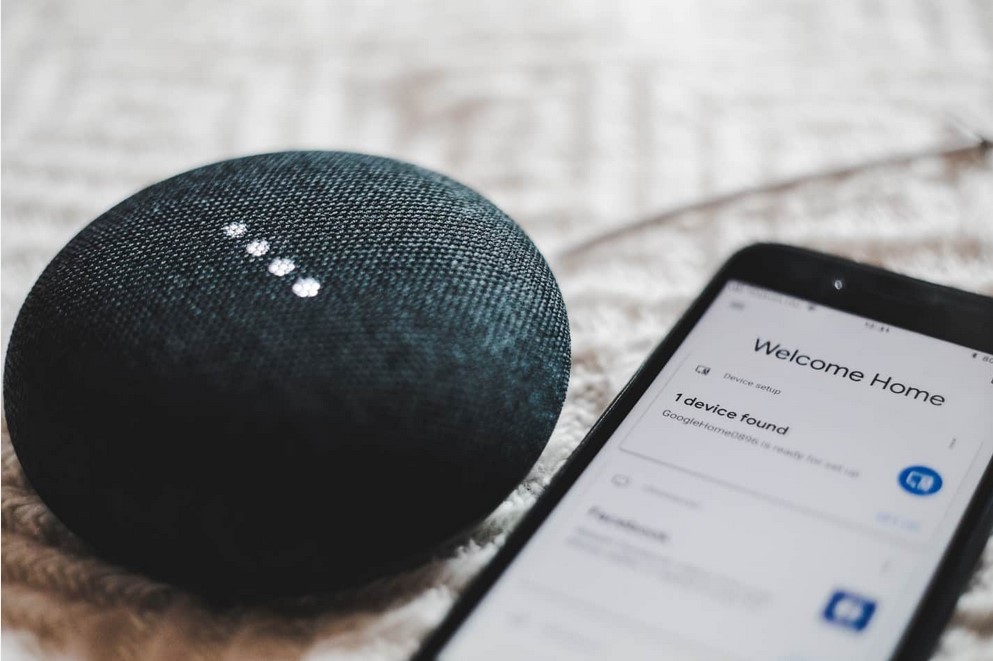
Importance of Security Features in Smart Speakers
As smart speakers become more prevalent in homes, concerns about security and privacy have also grown. Smart speakers are always listening for their wake word, which raises legitimate concerns about unauthorized access or data breaches.
Data Encryption: Leading smart speakers from Amazon, Google, and Apple use end-to-end encryption to protect the data transmitted between the device and cloud servers. This ensures that even if the data is intercepted, it cannot be easily deciphered.
User Authentication: Many smart speakers now include voice recognition capabilities that allow them to distinguish between different users.
This means that personal information, such as calendars, messages, and shopping lists, is only accessible to the authorized user. For example, Google Nest Audio uses Voice Match to provide personalized responses.
Microphone and Camera Controls: Privacy-conscious users will appreciate smart speakers that offer physical controls to disable microphones and cameras.
For instance, the Amazon Echo series includes a microphone off button, which electronically disconnects the microphones to ensure they are not listening.
Protecting Your Data: To safeguard your privacy, it’s crucial to regularly review and delete voice recordings stored by your smart speaker.
Most platforms allow you to manage your data via the companion app or through the device settings.
Additionally, setting up strong passwords and enabling two-factor authentication can help prevent unauthorized access.
Integration with Smart Home Systems
How Smart Speakers Integrate with Other Smart Devices
Smart speakers have evolved into the central hubs of smart homes, offering seamless control over a variety of devices.
Here’s how they integrate with other smart home systems:
Lighting Control: Smart speakers can connect to smart bulbs or switches, allowing you to control your home’s lighting with simple voice commands. For instance, saying “Alexa, turn off the lights” can instantly switch off all the lights in your home.
Thermostats: Smart thermostats, like those from Nest or Ecobee, can be controlled via smart speakers. You can adjust the temperature, set schedules, or even turn on energy-saving modes without lifting a finger.
Security Systems: Smart speakers can also integrate with home security systems, enabling you to arm or disarm your system, view security camera feeds, and receive alerts. This integration adds a layer of convenience and security to your home.
Entertainment Systems: Using smart speakers, you can control your TV, soundbar, or streaming devices. Whether it’s playing your favorite show on Netflix or adjusting the volume on your sound system, everything can be managed with voice commands.
Smart Appliances: Many modern appliances, such as refrigerators, washing machines, and ovens, now come with smart capabilities that can be controlled via smart speakers. For example, you can preheat your oven by simply telling your smart speaker, “Hey Google, preheat the oven to 350 degrees.”
Setting Up a Smart Home with a Smart Speaker as the Central Hub: To set up your smart home, start by ensuring all your devices are compatible with your chosen smart speaker.
Next, use the companion app to link your devices to the smart speaker. Organize your devices into groups (e.g., lights, security, entertainment) to simplify control.
Finally, customize routines and scenes, such as “Good Morning” or “Movie Time,” to automate multiple actions with a single command.
Voice Assistants Comparison
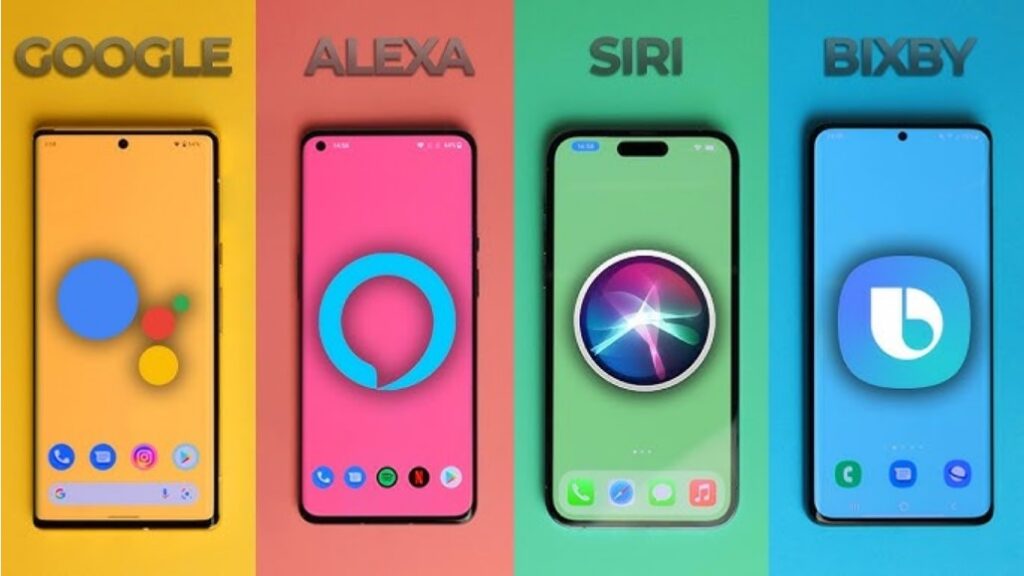
Comparing Alexa, Google Assistant, and Siri
Voice assistants are the brains behind smart speakers, and each one offers unique features and capabilities.
Here’s a comparison of the three leading voice assistants:
Alexa (Amazon): Alexa is known for its extensive skill set, with over 100,000 skills that allow it to perform a wide range of tasks, from controlling smart home devices to playing games.
Alexa also integrates seamlessly with Amazon’s services, such as Prime Music and Amazon Shopping.
It supports multi-room audio, voice calling, and drop-in features, making it versatile and user-friendly.
Google Assistant (Google): Google Assistant excels in its ability to provide accurate and context-aware responses, thanks to Google’s powerful search engine.
It integrates well with Google services like Calendar, Maps, and YouTube, making it particularly useful for users who rely heavily on Google’s ecosystem.
Google Assistant also supports Voice Match, allowing personalized responses based on the user’s voice.
Siri (Apple): Siri is deeply integrated into Apple’s ecosystem, offering seamless interaction with Apple devices like iPhones, iPads, and Apple TVs.
While Siri may not have as many third-party skills as Alexa, it excels in privacy and security.
Siri can control HomeKit-enabled smart home devices, send messages, make calls, and provide updates on your calendar or reminders.
Which Voice Assistant Is Best for You?
- Best for Smart Home Control: Alexa, due to its extensive compatibility with smart home devices.
- Best for Accurate Information: Google Assistant, thanks to its superior search capabilities.
- Best for Privacy and Security: Siri, ideal for users who prioritize data privacy and are invested in the Apple ecosystem.
User Experiences and Reviews

Real User Testimonials and Case Studies
When considering a smart speaker, it’s helpful to know what other users think about their experiences.
Here are some insights from real users:
Testimonial 1: Alexa has become an indispensable part of my daily routine. From managing my shopping lists to controlling my smart home devices, I can’t imagine going back to life without it. The Echo 4th Gen, in particular, has been reliable and responsive, making it my go-to for everything. — Sarah M., New York
Testimonial 2: Google Nest Audio has completely changed the way I listen to music at home. The sound quality is phenomenal, and the voice recognition is spot on. I love how it integrates with all my Google services, making it easy to manage my day. — Mike R., California
Testimonial 3: The HomePod Mini is perfect for my small apartment. It fits in seamlessly with my Apple products, and the sound quality is excellent for such a small device. Siri’s voice recognition is very accurate, which makes controlling my smart home a breeze. — Emily T., London
Case Study: Sonos One Multi-Room Setup A family in Seattle used multiple Sonos One speakers to create a multi-room audio setup that delivers high-quality sound throughout their home.
They appreciated the ability to control music in different rooms independently or synchronize playback across all rooms.
The seamless integration with both Alexa and Google Assistant provided flexibility in managing their smart home ecosystem.
Balanced View: While many users have positive experiences with smart speakers, some common issues include occasional voice recognition errors or difficulties integrating with certain third-party devices.
However, manufacturers continuously update their software to address these concerns, improving functionality and user experience over time.
Future Trends in Smart Speakers

What’s Next for Smart Speakers?
The smart speaker market continues to evolve rapidly, with exciting new features and integrations on the horizon.
Here’s what we can expect in the future:
AI and Machine Learning: As AI technology advances, smart speakers will become even more intuitive, learning from user behavior to provide more personalized and proactive responses.
For example, your smart speaker might start suggesting actions based on your routine, like setting reminders before meetings or adjusting the thermostat based on your preferred comfort level.
Enhanced Voice Recognition: Future smart speakers are likely to feature improved voice recognition capabilities, making them more accurate in noisy environments and better at understanding different accents or languages.
This will make voice assistants more accessible to a global audience.
Deeper Integration with Smart Homes: Smart speakers will continue to expand their role as central hubs in smart homes.
We can expect them to integrate more seamlessly with a broader range of devices, including emerging technologies like smart mirrors, advanced security systems, and even smart kitchens.
Privacy-Focused Features: As concerns about privacy grow, future smart speakers are expected to include more robust privacy controls, such as enhanced data encryption, better transparency in data usage, and easier ways to manage and delete stored data.
Interoperability and Open Standards: There is a growing push towards interoperability and open standards in the smart home industry.
Future smart speakers may be designed to work more seamlessly across different platforms, reducing compatibility issues and offering consumers more choices in their smart home setups.
Buying Guide: How to Choose the Right Smart Speaker
A Comprehensive Guide to Purchasing a Smart Speaker
Choosing the right smart speaker can be overwhelming with so many options available.
Here are key factors to consider:
1. Budget: Determine how much you’re willing to spend. Entry-level speakers like the Google Nest Mini offer good value for budget-conscious buyers, while premium models like the Bose Home Speaker 500 provide top-tier audio quality at a higher price.
2. Ecosystem Compatibility: Consider the smart home ecosystem you’re already invested in. If you use Google services extensively, a Google Nest speaker might be the best fit.
Similarly, Apple users may prefer the HomePod Mini for its seamless integration with other Apple products.
3. Sound Quality: If audio quality is a priority, focus on speakers known for superior sound, such as the Sonos One or Bose Home Speaker 500. Look for features like stereo sound, bass enhancement, and multi-room capabilities.
4. Voice Assistant: Decide which voice assistant best meets your needs. Alexa is known for its wide range of skills, Google Assistant for its search capabilities, and Siri for its privacy and integration with Apple devices.
5. Additional Features: Consider any additional features you might need, such as smart home hub functionality, voice recognition, or privacy controls.
For instance, the Amazon Echo 4th Gen includes a built-in Zigbee hub, which can control a wide range of smart home devices.
6. Design and Aesthetics: Smart speakers come in various shapes and sizes, so choose one that complements your home decor.
Whether you prefer a minimalist design like the Google Nest Audio or the premium finish of the Bose Home Speaker 500, there’s a model to suit every taste.
Troubleshooting Common Issues

Solutions to Common Smart Speaker Problems
Even the best smart speakers can occasionally run into issues.
Here are some common problems and how to fix them:
1. Connectivity Issues: If your smart speaker isn’t connecting to Wi-Fi, try restarting your router and the speaker. Ensure that the speaker is within range of your Wi-Fi network and that there are no obstacles blocking the signal.
2. Voice Recognition Problems: If your smart speaker has trouble understanding you, make sure you’re speaking clearly and at a reasonable distance from the device. You can also recalibrate the voice recognition settings through the companion app.
3. Integration Challenges: If your smart speaker isn’t integrating with other smart devices, check that all devices are on the same Wi-Fi network and compatible with your smart speaker.
Updating the firmware on both the smart speaker and the connected devices can often resolve compatibility issues.
4. Audio Quality Issues: If the sound quality is poor, ensure that the speaker isn’t placed in a location that muffles sound, such as inside a cabinet or against a wall. Adjusting the equalizer settings via the app can also help improve audio output.
5. Unresponsive Device: If your smart speaker isn’t responding to commands, try performing a factory reset. This will erase all settings and data, restoring the speaker to its original state. If the problem persists, consult the manufacturer’s support page for further assistance.
Smart Speaker Accessories and Enhancements
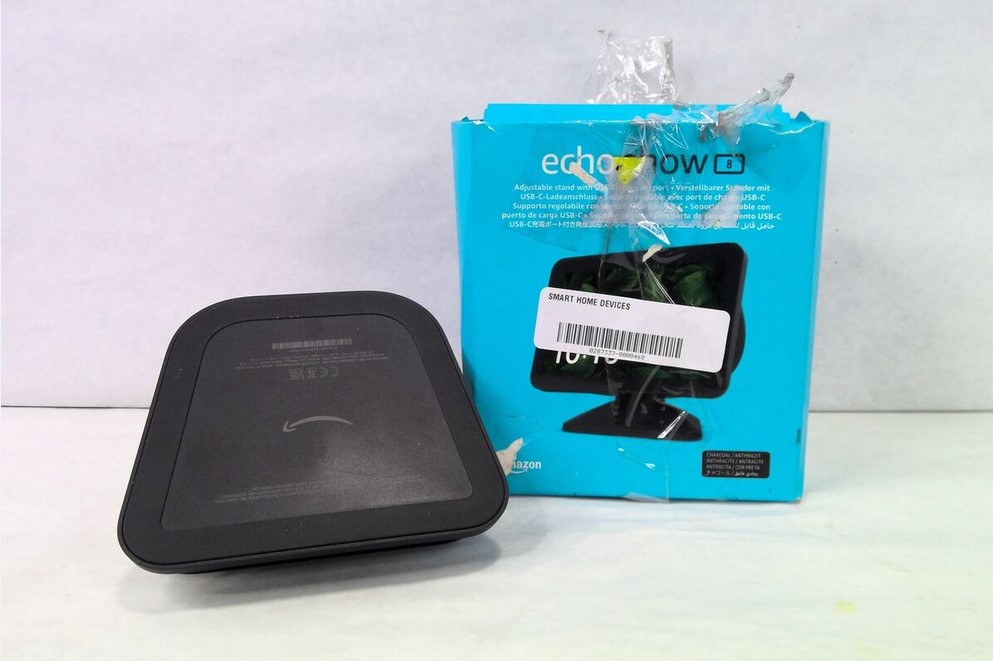
Enhance Your Smart Speaker Experience with These Accessories
There are various accessories available that can enhance the functionality of your smart speaker:
1. Smart Plugs: Smart plugs allow you to control non-smart appliances via your smart speaker. Simply plug the appliance into the smart plug, and you can turn it on or off with a voice command.
2. Speaker Stands and Mounts: Stands and mounts can help you position your smart speaker for optimal sound quality and microphone pickup. Wall mounts are particularly useful in small spaces where counter space is limited.
3. External Batteries: For portable smart speakers, external battery packs can extend the device’s battery life, making it perfect for outdoor use or areas without easy access to power outlets.
4. Privacy Covers: Privacy covers are designed to physically block the camera and microphone on smart speakers, offering an extra layer of security for privacy-conscious users.
5. Sound Enhancers: Sound enhancer accessories, such as bass boosters or soundbars, can significantly improve the audio quality of your smart speaker, especially in larger rooms or outdoor settings.
Smart Speakers and Accessibility
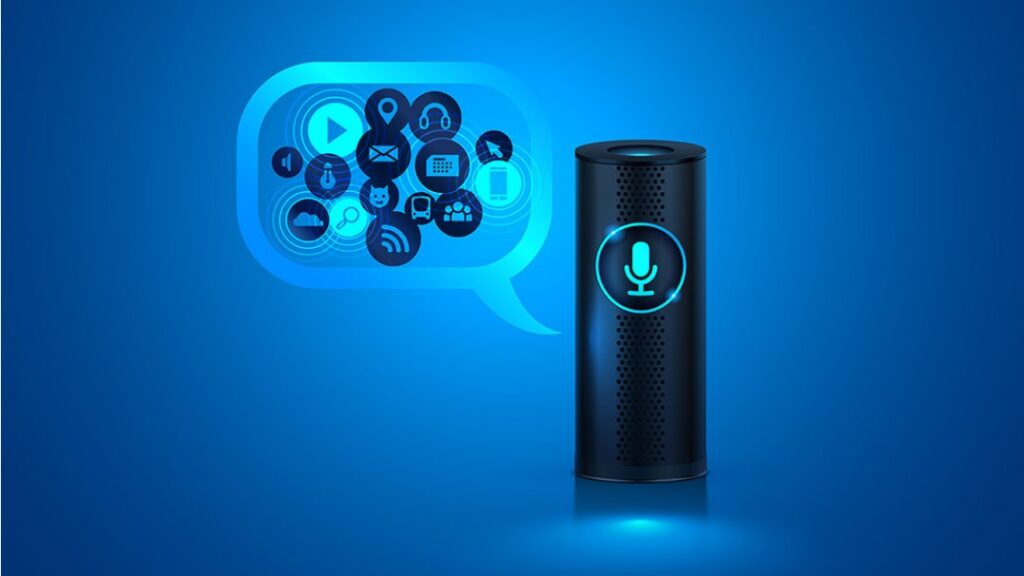
Making Technology Accessible for Everyone
Smart speakers have opened up new possibilities for people with disabilities, offering a range of accessibility features that make technology easier to use:
Voice Control: For individuals with mobility issues, smart speakers provide a hands-free way to control lights, appliances, and other smart devices. This reduces the need for physical movement, making daily tasks more manageable.
Audio Descriptions: Smart speakers can provide audio descriptions for visually impaired users, helping them navigate their smart home or access information without needing to see a screen.
Speech Recognition: Advanced speech recognition technology can understand a wide range of voices, including those with speech impairments, ensuring that everyone can use the device effectively.
Routine Assistance: Smart speakers can be programmed to perform daily routines, such as waking up, turning on lights, or reminding users to take medication. This is particularly beneficial for elderly users or those with cognitive impairments.
Emergency Assistance: In emergencies, smart speakers can be used to call for help, providing peace of mind for individuals living alone or those who may have difficulty reaching a phone.
Smart Speakers vs. Traditional Speakers
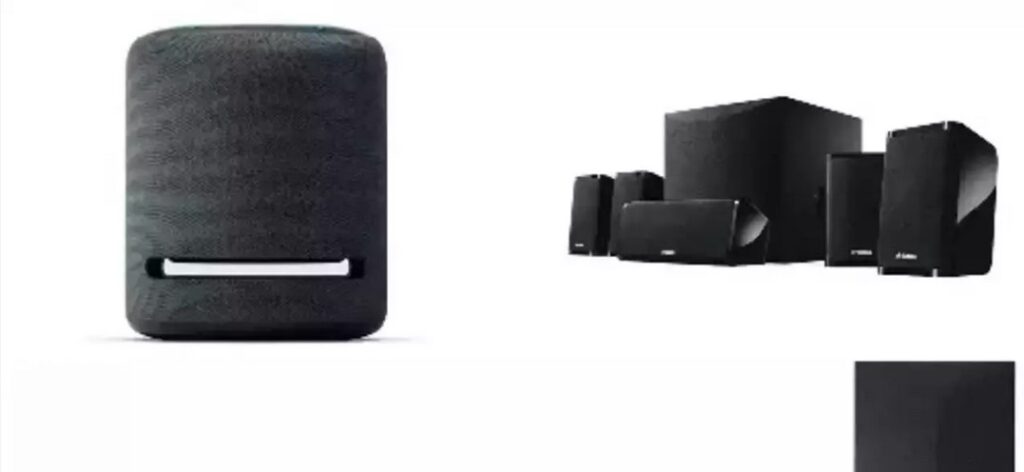
Comparing the Pros and Cons
Smart Speakers:

- Offer voice control and hands-free operation.
- Integrate with smart home systems for automation.
- Provide access to a wide range of online content, including music, podcasts, and news.
- Can act as hubs for other smart devices.

- Require a stable internet connection to function.
- May raise privacy concerns due to constant listening capabilities.
- Generally more expensive than traditional speakers.
Traditional Speakers:

- Often provide superior sound quality, especially at higher price points.
- No privacy concerns, as they don’t include microphones or connectivity features.
- Can be used without internet access.

- Lack smart features like voice control and automation.
- Require manual operation for volume control and input selection.
- Limited to audio playback from connected devices.
Which Should You Choose? If you value convenience, smart features, and home automation, a smart speaker is the way to go.
However, if sound quality is your top priority and you prefer a device without connectivity, a traditional speaker might be a better fit.
Best Practices for Using Smart Speakers
Maximizing the Potential of Your Smart Speaker
To get the most out of your smart speaker, consider these best practices:
1. Placement Matters: Place your smart speaker in a central location where it can hear your voice commands clearly. Avoid placing it in enclosed spaces like cabinets, as this can muffle the sound and interfere with microphone sensitivity.
2. Use Routines: Set up routines in your smart speaker’s app to automate multiple actions with a single command. For example, you can create a “Good Morning” routine that turns on lights, reads the weather, and plays your favorite music.
3. Keep Software Updated: Regularly update your smart speaker’s software to ensure you have access to the latest features and security patches. This can usually be done through the companion app.
4. Customize Your Experience: Take advantage of the customization options available, such as choosing your preferred news sources, setting up alarms and reminders, and adjusting the sound equalizer to match your preferences.
5. Manage Privacy Settings: Regularly review and adjust your privacy settings to control how your data is used. Consider deleting old voice recordings or disabling certain features if privacy is a concern.
6. Connect with Other Devices: Integrate your smart speaker with other smart home devices for a fully connected experience. This can include connecting to lights, thermostats, security systems, and even smart appliances.
Environmental Impact and Sustainability
Considering the Environmental Impact of Smart Speakers
As smart speakers become more prevalent, it’s important to consider their environmental impact:
Energy Consumption: Smart speakers are always on standby, ready to respond to voice commands.
While individual energy consumption is relatively low, the cumulative impact of millions of devices can be significant.
Choosing energy-efficient models and enabling power-saving modes can help reduce this impact.
Sustainable Materials: Some manufacturers are beginning to use recycled materials in their products. For instance, Google’s Nest Audio is made with a fabric covering that’s 100% recycled.
When choosing a smart speaker, consider models that emphasize sustainability in their design and production.
E-Waste: As with all electronic devices, smart speakers contribute to e-waste when they reach the end of their life cycle. Proper disposal or recycling is essential to minimize environmental harm
Some brands offer recycling programs, making it easier for consumers to responsibly dispose of their old devices.
Packaging: Look for smart speakers that come in minimal and recyclable packaging.
Companies like Apple and Amazon are increasingly focusing on reducing packaging waste by using fewer materials and more sustainable options.
Brand Initiatives: Many companies are launching initiatives to reduce their environmental impact.
For example, Amazon has committed to making its devices more energy-efficient and reducing carbon emissions across its operations. Supporting brands that prioritize sustainability can contribute to a more eco-friendly tech industry.
The Role of AI in Smart Speakers
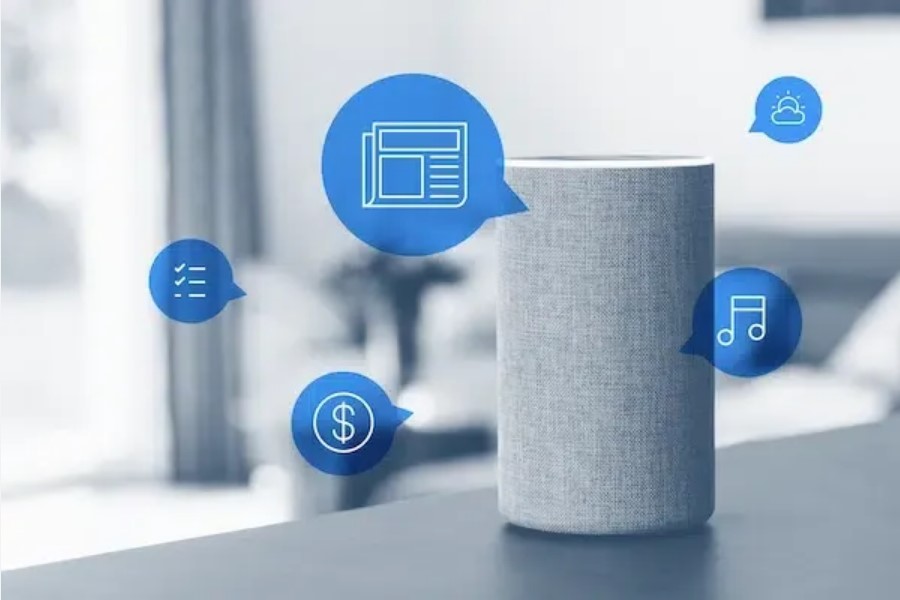
How AI Powers Smart Speaker Capabilities
Artificial Intelligence (AI) is at the heart of what makes smart speakers so effective.
Here’s how AI drives these devices:
Natural Language Processing (NLP): NLP is a branch of AI that enables smart speakers to understand and interpret human language.
This technology allows smart speakers to process voice commands, understand context, and respond appropriately.
AI models are continuously trained on vast amounts of data to improve accuracy and comprehension, even in noisy environments or with different accents.
Machine Learning: Machine learning algorithms enable smart speakers to learn from user interactions over time.
This means your smart speaker can start to recognize your preferences, suggest actions based on your habits, and even anticipate your needs before you ask.
For example, if you usually listen to a specific playlist in the morning, your smart speaker might suggest playing it as soon as you wake up.
Voice Recognition: AI-driven voice recognition allows smart speakers to differentiate between different users based on their voice patterns.
This enables personalized experiences, such as providing different reminders, calendars, or music preferences for each household member.
Contextual Understanding: Advanced AI in smart speakers can understand context, allowing for more natural interactions.
For instance, if you ask, “What’s the weather like?” followed by, “Do I need an umbrella?” the smart speaker understands that both questions are related to the weather and provides appropriate responses.
Future AI Developments: The future of AI in smart speakers is likely to include even more sophisticated conversational abilities, with smart speakers acting as true virtual assistants that can manage complex tasks, offer proactive advice, and seamlessly integrate into every aspect of daily life.
Smart Speaker Comparisons and Rankings
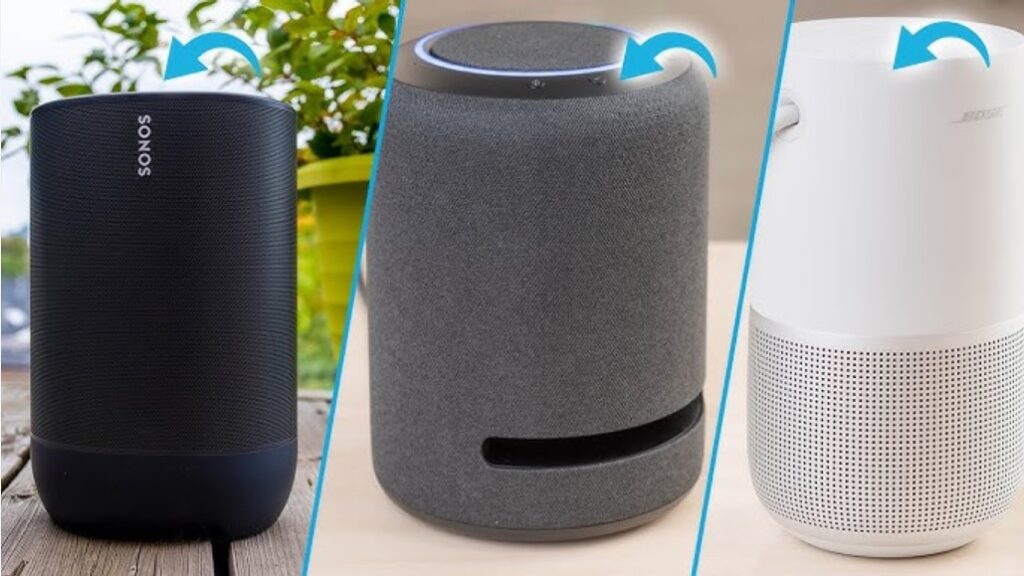
Ranking the Top Smart Speakers of 2025
Here’s a ranked list of the best smart speakers available in 2025, based on various criteria:
1. Sonos One (Gen 2)
- Why It’s #1: The Sonos One (Gen 2) takes the top spot due to its exceptional sound quality, multi-room audio capabilities, and dual voice assistant support. It’s the best choice for audiophiles who also want smart features.
- Pros: Superior audio quality, supports Alexa and Google Assistant, humidity-resistant.
- Cons: Higher price point.
2. Amazon Echo 4th Gen
- Why It’s #2: The Echo 4th Gen is a versatile smart speaker that excels in smart home integration, making it ideal for users heavily invested in the Amazon ecosystem.
- Pros: Built-in Zigbee hub, Dolby audio processing, affordable.
- Cons: Alexa’s voice recognition can occasionally falter in noisy environments.
3. Google Nest Audio
- Why It’s #3: Google Nest Audio is perfect for users who prioritize sound quality and Google Assistant’s capabilities. It’s especially good for those already using Google services.
- Pros: High-quality sound, Voice Match, seamless Google integration.
- Cons: Limited third-party smart home device compatibility.
4. Apple HomePod Mini
- Why It’s #4: The HomePod Mini offers excellent sound for its size and integrates seamlessly with Apple devices. It’s the best option for Apple ecosystem users.
- Pros: Compact, 360-degree sound, HomeKit integration, Siri’s privacy features.
- Cons: Limited to Apple’s ecosystem.
5. Bose Home Speaker 500
- Why It’s #5: Known for its premium sound and build quality, the Bose Home Speaker 500 is a top choice for those who don’t mind paying a premium for superior audio.
- Pros: Stereo sound, color display, supports Alexa and Google Assistant.
- Cons: Expensive compared to other models.
Honorable Mentions:
- Google Nest Mini: Best for budget-conscious users who want basic smart speaker features at an affordable price.
- Amazon Echo Show 8: Ideal for users who want a smart speaker with a screen for video calls, watching videos, and more.
FAQs about Smart Speakers
Addressing Common Questions and Concerns
Here are some frequently asked questions about smart speakers to help clear up any confusion:
Q1: Can smart speakers listen to my conversations? A: Smart speakers are always listening for their wake word (e.g., “Alexa,” “Hey Google,” “Hey Siri”), but they only start recording and processing commands after detecting this word. You can always mute the microphone to prevent it from listening.
Q2: How do I choose the right smart speaker for my needs? A: Consider factors such as your preferred voice assistant, the smart home ecosystem you’re invested in, sound quality, and budget. If you’re already using Google or Apple products, you may want to stick with their respective smart speakers for better integration.
Q3: Are smart speakers secure? A: Leading brands like Amazon, Google, and Apple take security seriously, using encryption to protect your data. However, it’s important to regularly review your device’s privacy settings and manage your stored data to enhance security.
Q4: Can I use multiple smart speakers in my home? A: Yes, most smart speakers support multi-room audio, allowing you to place speakers in different rooms and synchronize music or control devices across your home.
Q5: What can I do if my smart speaker isn’t responding? A: First, check the power supply and ensure the speaker is connected to Wi-Fi. You can also try restarting the device or resetting it to factory settings if the problem persists.
